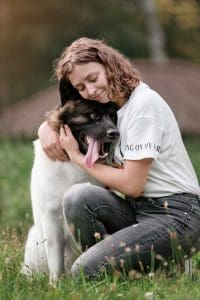
The average American moves 11 times in their lifetime. Despite all this moving, we don’t move far from home. More than half of young adults live within 10 miles of where they grew up. While 10 miles isn’t much of a difference for humans, moving anywhere can be confusing for dogs, especially senior dogs.
While it’s a bit harder to help a senior dog adapt, it’s not impossible if you know how. We’ll discuss a few ways to move with an elderly dog here.
Don’t Change Routines
Dogs, like people, can get very attached to routines, so it’s important to keep those routines up whenever possible. When moving with a dog, you shouldn’t pack beds, toys, or anything the dog has grown attached to until you’re almost done packing. You should also go for a walk at a regular time right up until you leave.
Once you move into your new house, try to re-establish your old routines and get them used to their new surroundings. This will give your senior dog a sense of stability in a confusing situation. It will also give you an opportunity to explore the neighborhood or show your dog that you’re in the same neighborhood.
Make Time for Them
The one constant in your dog’s life during a move is you, and they rely on you to help them adjust. It might be tempting to spend all your time packing and unpacking, but your dog needs attention, too.
Research has shown that dogs can, to a certain extent, sense emotions. Their highly attuned sense of smell allows them to pick up on chemicals our bodies release in response to different emotions. If you’ve been feeling stressed, your dog is aware of it, and it’s probably making them stressed, too.
Making time to play with your dog also helps them stay healthy. Pet obesity is an epidemic, and making time to play outside with a dog will help them get or stay in shape. It will also tire them out so you can unpack without many distractions.
Be Prepared
No matter how much we prepare for it, our pets can still get anxious. Unfortunately, pets often deal with their anxiety by acting out. If your dog’s normal walking schedule isn’t kept, they might have potty accidents.
Don’t worry. If you get them back on a walking schedule, they should be fine. If they don’t seem to be improving despite any efforts to readjust, take them to the vet. You should visit the vet anyway to get your pet used to their new one.
Moving with a Dog: How to Help a Senior Dog Adjust to a New Home
Moving with a dog can be complicated, and moving with a senior dog can be even more confusing. Old dogs are often set in their ways, so it’s important to preserve their routines and get them comfortable in a new home as soon as possible. We’ve discussed a few ways to do that here.
If you’re worried about cognitive decline in your senior dog, we can help with that, too. We’ve designed a special bowl to benefit senior dog health that helps dogs exercise their brains whenever they eat dog treats.
